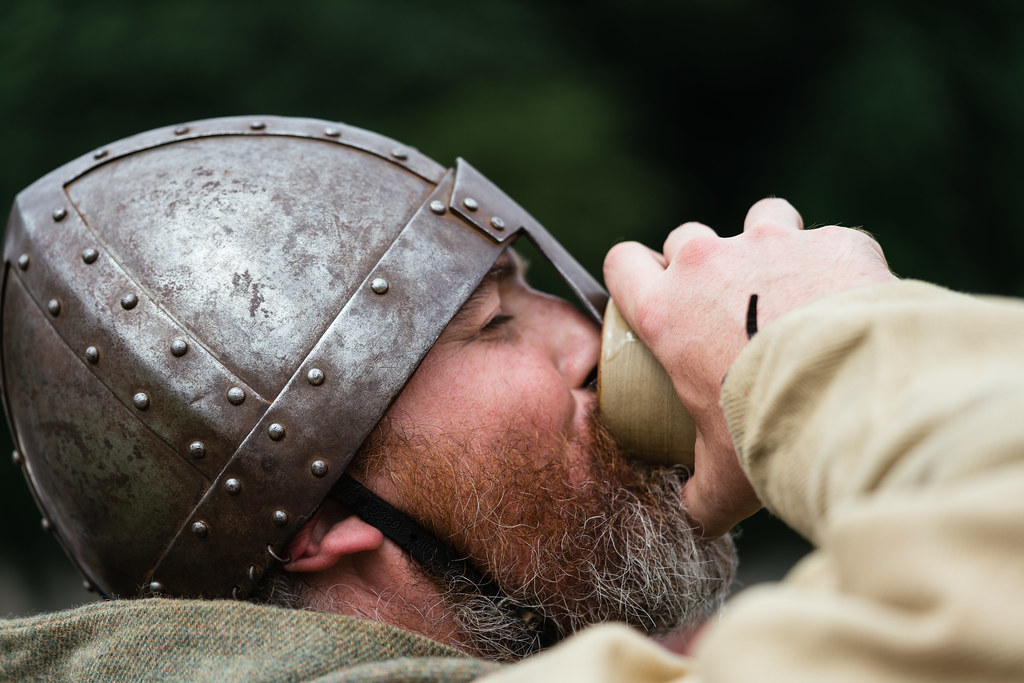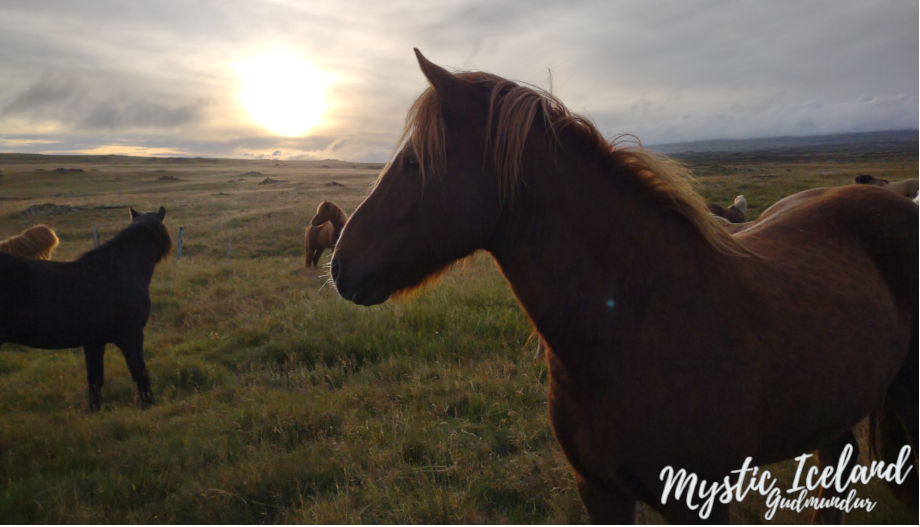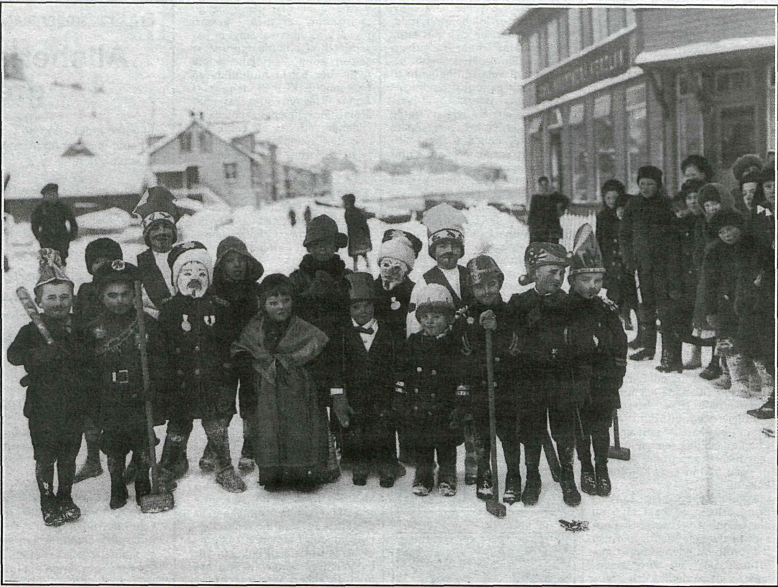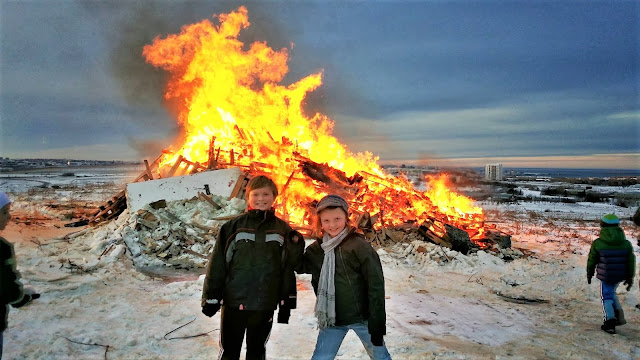Don’t miss out on this sneak peek into how to prepare for Þorrablót or Thorri’s Sacrifice. Find out what food people should serve during the Midwinter Festival and how to prepare them.
A legendary king
Þorri was not only a legendary Norwegian king but also the personification of frost as well. Not to mention the fact that it’s the name of the fourth month of winter. According to the Gregorian calendar, Þorri begins on the Friday between 19th and 26th of January and lasts until Gói takes over.
King Þorri became the ruler of Gotland, Kvenland, and Finland. He was the father of Nór the King of Álfheim, Gór the Sea King, and a girl named Gói (later often called Góa). One day during the month when Þorri normally made his sacrifice, his daughter Gói disappeared.
Consequently, Þorri was too distraught to go ahead with his sacrificial ceremony and postponed it until the following month. Accordingly, the sacrifice that year became known as Góiblót or Gói’s sacrifice instead of Þorrablót (Thorri’s sacrifice). His two sons Nór and Gór went out looking for their sister, but no matter how hard they looked, she was nowhere to be found. For this reason, the month after Þorri month, became known as the month of Gói.
The end of sacrificial ceremonies
“A sacrifice to en:Thor” by Johan L. Lund (1777-1867) licensed under CCO 1.0
When the Norse Vikings first arrived in Iceland they brought with them their pagan rituals where they continued their practices in peace. That is until the king of Norway Christianized Iceland in the year 1000 and they were forced to stop their pagan ways. With time, Christian versions of many of the pagan rituals and celebrations developed. One may wonder if this was a way to keep the Vikings happy and compliant.
The revival
The Þorrablót (sacrifice) lay dormant for almost a millennium. In 1867 a secret society consisted of Reykjavik’s elite called Leikhús andans (the spirit’s theater). Later, they changed their name to Kvöldfélagið (The evening society). The society held the first confirmed public Þorrablót. Until then, Icelanders had only been observing the event in private. These parties weren’t ritualistic for the sake of paganism, but rather used for humor and drinking.

Once again the traditional winter solstice food was back on the table. But after such a long time, how did the modern Icelanders figure out which foods to eat during the Midwinter Festival?
In the mid 20th century, The restaurant business in Reykjavik was struggling. Finally, in 1958, the traditions of food and drink of the winter solstice were reinstated.

Photo: Nest Restaurant used to be in this building in Vesturgata 6, Reykjavik.
The owner of the restaurant Naust had noticed that the organized events ordered more of the old traditional cuisine, rather than modern dishes. In this spirit, he got the idea to reintroduce it. His plan worked and soon other restaurants followed suit. It turned out that people loved the revival of traditional foods during the Midwinter Festival.
Þorri's food was included in Nausti's menu and served as a model for what was to be served at Þorrablót. It was the same food that our forefathers ate, and it was prepared in the same way. This quickly became the traditional pagan winter solstice food and a way to celebrate the pagan winter solstice. Thus, the meat served on the menu was meat from the previous year, preserved without refrigeration.
Prepare and serve
From the earliest Icelandic settlers in the 9th century, people have had to prepare for long, difficult winters. As there was little to hunt or harvest during those months, their only hope of survival was to prepare and preserve the food collected during the warmer months. Unfortunately, salt was not available to them, so they had to find other methods to preserve their food. That was already a scarce commodity in Europe. One source says that since it was so hard to find, the Danish king would not send any to Iceland.
Where there is a will, there is a way. One of the methods they used was leggja það í súr (lay it in sour) which means to pickle in fermented whey. In summer, Icelanders make skyr (similar to Greek yogurt) and collect the remaining acidic liquid called Mysa. They then use the mysa as a drink or to lay things in sour. However, the mysa wasn’t ripe enough to drink until it was two years old. To make it drinkable, they mixed the acid with eleven parts of water.

The discovery of mysa was a blessing. Mysa is fermented whey and the lactic acid preserves the meat, breaks down the protein, and kills bacteria. The breaking down of the proteins makes the meat tender. This made mysa the perfect preservation tool for food during the Midwinter Festival.

Another unique preservation method was that of the shark meat. Sharks don't have a bladder so they excrete their urine through their skin. In the process, the urine enters the bloodstream rendering the meat rancid. It must be fermented to remove the ammonia or urine from the meat.
Are you ready to learn more about traditional food during the Midwinter Festival?
What's on the menu?

1. SINGED SHEEP'S HEAD
Svið (singed sheep's head). The word svið means singe in English. Icelanders singe the head and saw it in half to remove all the hair and to clean it. Afterward, we put it in a pot and boil it until it's cooked. Don't over-boil. The singed sheep's head must be intact when presented at the table. During the process, we remove the brain, but it isn't forgotten!
Like our ancestors, we eat as much of the head as possible, including the eyes. The tastiest part of the singed head is the cheeks. However, some Icelanders love the flavor of the sheep's eyes.

2. TONGUE
The tongue has a lot of meat and it only has one small bone called málbein or the hyoid (lingual) bone.
We have a superstition that if a child in your home hasn't learned to speak yet you have to break the bone into three pieces. If you don't do this, the child will never speak.

3. SHEEP JAM
Sviðasulta (Sheep jam). Another delicatessen from a singed and boiled sheep head. Scrape the meat off the bones, put it in a container with the gelatin-rich juices (the cooking liquid) from the head, and press it. Allow it to cool. Once it's ready it looks like a meaty block of cheese. Cut it into slices.

4. PRESSED SHEEP FILET
Lundabaggi (pressed sheep filet/fat). Very fat secondary lamb meat (i.e. Colon) wrapped in the cleaned large intestinal lining and sewed shut. Press it, roll it, boil it, pickle it, cure it in lactic acid and slice it.

5. LAMB BLOOD SAUSAGE
Slátur/Blóðmör (Lamb blood sausage). The lamb or sheep blood gives the sausage a dark color. Mix the blood with fat, rye flour, and oats. Then stuff the sausage into the lamb's reticulum (stomach lining) and sew shut. Boil the sausage. Can also "lay in sour" (pickled, put in lactic acid). You can also pickle the sausage in water or milk because the rye meal will sour similar to whey.

6.LAMB LIVER SAUSAGE
Slátur/Lifrarpylsa (Lamb liver sausage). Mostly made of lamb liver and rye flour. Add chopped lamb fat into the mixture. Stuff the mixture into the lamb's reticulum (stomach lining). Boil the sausage. You can also pickle the sausage in water or milk because the rye meal will sour similar to whey Lifrarpylsa

7. RAM'S TESTICLES
Hrútspungar (Ram's testicles). Somewhat differently prepared today. The old way: stuff the testicles and ram's fat into the shaved and singed ball sack. Sew the sack shut and boil it. Pickle them in sour whey and slice. They called this testicle delicatessen spectacle-sausage because of its round shape. Another way to prepare them is to first wash the testicles, boil them, press them into molds and then cure them with lactic acid. You will get a block of testicle cheese to slice.

8. FERMENTED SHARK
Hákarl (Shark) or technically rotten/fermented shark. It is a Greenlandic shark. Bury it in a shallow, gravelly pit. Cover it with heavy rocks and leave it for 6 to 12 weeks to allow for the fluids to drain completely. Digging a hole for the shark in beach sand for a few months allows it to rot in a certain way, giving it a strong flavor (like strong cheese). This method is called kæstur (Kæstur hákarl). Recover the meat, slice it and hang it up for fermentation (or to rot). This can take as long as 7 months. The curing removes the ammonia (which came from the urine) making the meat safe to eat. Serve the meat in small cubes. When you eat this, make sure to chase it with a shot of hard liquor.
Chase the cubed shark down with Brennivín (Icelandic schnapps).

9.WIND-DRIED FISH
Harðfiskur (wind-dried fish). The preferred fish for wind drying are cod, haddock, or seawolf. Eat it with butter as you would with bread. Even today we eat this delicious dried fish as an everyday snack.

10. FLATBREAD
Flatbrauð (flatbread) dates as far back as to the Icelandic Settlement in 874 A.D. and is served with butter.

11. RYE BREAD
Rúgbrauð (rye bread) or thunder-bread can create powerful flatulence in most of us. Serve it with butter and pickled herring.

Are you still wondering what I meant by the brain not being forgotten? There's an old Icelandic saying: "Allt er matur sem í magann kemst" or "All is food that in the stomach goes." You may not see the brain on the menu today, but on the farms, they boiled and stirred it. Sometimes they kneaded it into a cake and then ate it. Outside of Iceland, they called the brain (when served as food) Head-cheese.
Are you ready to dive into the traditional food we serve during the Midwinter festival?
Once the Þorrablót eating-fest is over, it is time to drink some more, sing, play games, tell folktales, and dance until dawn. Have fun and party like an old Viking settler!









